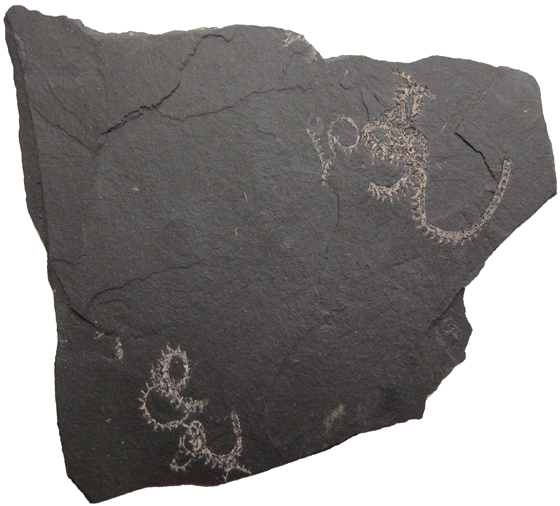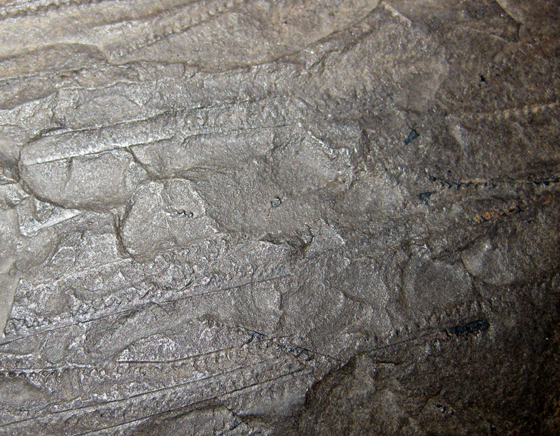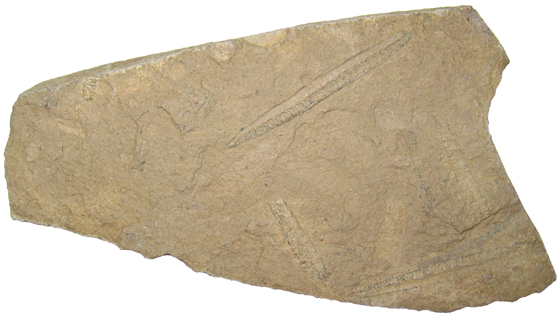
 |
 |
| Hemichordata |
Hemichordates
are soft-bodied animals that are close relatives to chordates.
They possess a structure similar to a notochord, as well
as several derived chordate features: a pharynx with multiple
openings, a dorsal nerve cord, and
a ventral
blood vessel (Prothero, 1998, p. 333). Although they possess
an elongated, bilaterally symmetrical body, which is very
different than
echinoderms radial symmetry,
there is evidence to suggest that hemichordates are a sister
group to the echinoderms. Some hemichordate
larvae are very similar to echinoderm larvae. DNA studies
also suggest a close relationship to the echinoderms (Waggoner,
1997, UCMP Berkeley). The most familiar hemichordates today
are the acorn worms (class Enteropneusta). Acorn worms
have a worm-like body with a proboscis used for burrowing
and feeding. Graptolites (class Graptolithina) are the
most important hemichordate fossil. Graptolites are fossil colonial organisms. The name graptolite is derived from the Greek. Grapto- means inscribed or written and -lite means stone (Borror, 1988, pp 43 & 54). This name comes from the fact that graptolite fossils reminded people of hieroglyphs inscribed in stone. Most graptolites are preserved as carbon films on Paleozoic black shales. They look like tiny hacksaw blades. Graptolites first appear in the Cambrian and become extinct in the Carboniferous. Long before anyone new the biology of the graptolites they became the most important index fossils for Ordovician and Silurian strata. Graptolites evolved rapidly and many were pelagic animals floating on oceans worldwide, feeding on plankton. In
1948 Koszlowski determined the nature of graptolites by
extracting three-dimensional specimens from cherts. These
specimens were imbedded in paraffin and sectioned. A graptolite
colony (rhabdosome) is divided into branches (stipes) that
support many cup-like tubes (thecae). Thecae house
individual organisms called zooids. At the base of the
rhabdosome is a sicula that represents the zooid, which
founded the colony. A long spine-shaped structure called
the nema extends from the sicula and, in life, functioned
as an attachment to some floating body (Prothero,
1998, p. 335).
|
 Graptolites GraptolitesSilurian Leon, Spain Specimens are 2 cm wide |
|
 Graptolites Location Unknown |
|
Borror,
D.J. (1988). Dictionary of Word Roots and Combining
Forms. California: Mayfield Publishing Company. Waggoner, B. (1997). Introduction to Hemichordata. California: UCMP Berkeley |











